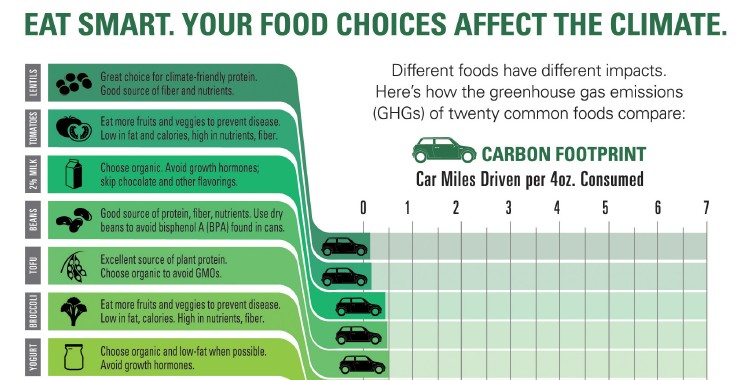
Environmental Working Group 'Meat-Eater's Guide'
Through time and repetition, certain comparisons have become standardized, so that we now measure square footage in football fields -- and we measure pollution with cars.
It's happened so slowly that we barely notice it anymore. But several of us sat bolt upright earlier this week, when an outfit called the Environmental Working Group published a report about the impact of food production on the environment. What got our attention? The group uses cars as its dirty yardstick to measure pollution.
Why?
Generally speaking, measuring things is easier when we compare them to other things. Saying that something is 1400 feet high doesn't make much of an impression on a listener other than, "Oh, that's probably really high." Saying that something is as tall as the Empire State Building, however, gives that same listener a reference point.
In this case, the Environmental Working Group has calculated the greenhouse-gas emissions that accumulate over the lifespan of certain agricultural products. And to drive home its points (no pun intended), the group measures out that pollution in auto emissions.
A serving of broccoli, for example, generates the same carbon-dioxide emissions as driving half a mile by car. Eating cheese, however, is like cruising more than 6.5 miles, and downing a four-ounce slab of lamb is equivalent to driving over seven miles.
What's the standard?
Right away, car fans can point out some flaws in the group's metrics -- the major one being that while the group takes great pains (63 pages, in fact) to explain its methodology for calculating agricultural pollution, we can't seem to find a straightforward explanation of how it established an average emissions rate for cars.
Is it relying on data from SUVs? Sedans? It's certainly not picking on the Toyota Prius.
How can the group do that? Because the car is an unquestioned stand-in for filth. Consider this statement from page 2: "IF YOU eat one less burger a week...it's like taking your car off the road for 320 miles, or line-drying your clothes half the time." Line-drying? Does anyone under 40 even know what that means? Stick with cars for reference points, please.
The big takeaway
We should point out that we're not attacking the Environmental Working Group. Clearly, it put a lot of effort into its data, and there's no reason to believe it's not sound.
For us, the big takeaway from this study has nothing to do with agriculture or the human diet. The big takeaway is that cars have become so thoroughly synonymous with pollution that we take the metaphor for granted.
Apart from proud owners of Leafs and Priuses (or Prii, if you must), few people are going to look at this report and object to the comparison. In fact, we'd wager that the equation of cars with pollution is so ingrained that people from all points along the political spectrum buy it.
Then again, maybe we're getting too philosophical about this -- or too optimistic that everyone sees cars as pollutants. In the comments section below, feel free to share your opinions, as well as your own favorite metaphors for pollution. (But please leave line-drying out of it.)
[EWG]
+++++++++++













